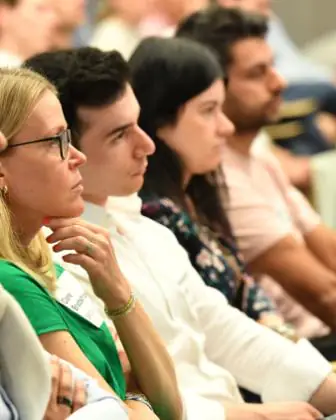
Inclusion as a Value Driver

An organization with a diverse and inclusive culture draws on all its human capital to perform towards clear strategic goals and drive value. Caroline Rawes, Chief Human Resources Officer at Cinven, talks to Dermot Halpin, CEO of tax preparation software provider Taxwell, about the challenges he faced when he took over as CEO in 2022 and how he overcame them to achieve an authentically inclusive and diverse culture.
The best decisions and, ultimately, the best performances are achieved by listening to diverse perspectives.
However, it’s a mistake to think diversity on its own is enough to shift the performance dial. Inclusion is also key. Real inclusion demands skilful management and a culture that embraces and adapts to different perspectives so that everyone can thrive. Increasing diversity through recruitment is not enough. It is also critical to educate, build awareness, and engage with people across the organisation on how to encourage diverse voices and points of view. And when organisations get the combination of diversity and inclusion right, it can be a really powerful performance driver.
Taxwell is a great example of the benefits of building a diverse and inclusive culture to drive value and enhance performance. I talked to Dermot Halpin, Taxwell’s Chief Executive Officer, about how he approached changing his company’s culture, the biggest challenges he faced, and how he measures success.
Caroline: What was the culture at Taxwell when you first took over as CEO two years ago?
Dermot: Taxwell is the sum of two very different companies—Drake Software and TaxAct—and when we brought them together in 2022, they both had very different cultures and ways of getting things done.
Drake’s culture reflected its roots—founder-led with more traditional Southern values. TaxAct, on the other hand, looked more like a typical West Coast tech company.
When we brought these two companies together, we set out to do more than just combine them—we wanted to create something bigger and better than either could achieve on their own. The combination made new demands on the organisation in terms of customer focus and increased speed to market. It was clear to me that the culture we had to build needed to support those aims. In fact, our growth depended on shifting the culture in this direction. To your point above, Caroline, the shift depended on bringing old and new voices together to plot the best course forward, ensuring relevant expertise and opinions were not only heard but included and then actioned.
Caroline: What were the biggest challenges to changing the culture?
Dermot: Our vision for Taxwell was far bigger than what either company had achieved on its own. Our plan was to build upon the existing Drake and TaxAct products and to significantly improve the customer experience. However, we were bringing together two companies that had individually done well for extended periods of time, so no one was really questioning the status quo. We faced what I’d call ‘cultural inertia’—the mindset of, “We’ve always done it this way, and it works, so why change?” That’s a tough nut to crack.
The key was leaving the old ways behind and building a new culture focused on customer outcomes, driving performance, and holding ourselves accountable.
Caroline: What were some of the key steps you took?
Dermot: To change the culture, we had to be crystal clear about what mattered most and why. We broke it down so everyone knew what success looked like—and more importantly, how their work fit into the bigger picture. And we started making decisions based on facts, not just gut instincts or tradition.
We’re building a performance-based culture here, so the goal is to increase autonomy and critical thinking rather than have people being told exactly what to do or just accept what “the boss” says. I can assure you, speaking as the boss, that he doesn’t have all the answers!
Changing the culture also meant setting clear goals for everyone and introducing performance reviews to track how we’re doing against those goals. In tandem, we now track employee engagement to get direct and anonymous feedback.
It also means having evidence-based justification for doing things. So we invested in collecting the right data and making it available so people can make high-quality decisions.
Most importantly, we had to ensure ideas and opinions were genuinely heard. We had to encourage people to speak, and we had to listen (you don’t learn much with your mouth open). This is where inclusion really matters to execution—bringing in different perspectives to get the best results.
As CEO, I set the tone from the top by talking openly with people across the business every day. I want to hear their thoughts directly—especially the ones they might hesitate to share in formal settings.
Caroline: How do you measure success?
Dermot: We measure success by how we’re delivering for customers. For instance, our customer satisfaction scores (NPS) are up across the board. We’re only two years into this journey, and while we’ve already made significant changes, we know there’s still so much more to achieve.
Caroline: What advice would you give a leader looking to nurture a more inclusive and diverse culture to drive performance?
Dermot: Model the behaviour. Be the one who’s actively including people. You can’t just slap a slogan on a card and call it a day. You have to be proactive: if you don’t actually look for diverse perspectives, you’re not going to get real diversity and inclusion.









